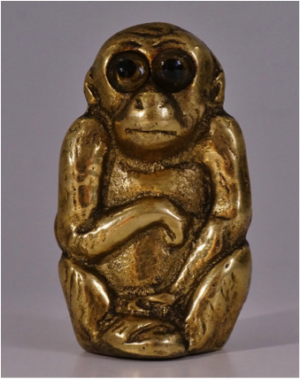The story goes that cannon balls on British ships were stored on deck in pyramidal-shaped brass stands called “monkeys.” They say that in cold weather, the brass would expand faster than the iron balls, causing the balls to fall off and roll around the deck creating havoc for the crew. Thus came the expression, “Cold Enough to Freeze the Balls Off a Brass Monkey.”
A moment or two of rational thought proves the story cannot be true. Deck space on sailing ships is very limited; no captain in his right mind would allow cannon balls to take up valuable space because they made an attractive display. And what kind of fool would store iron cannon balls on brass stands?
Cannon balls are heavy objects weighing anywhere from 4 to 42 pounds; they had to be tightly secured so as not break loose in heavy weather. In fact, cannon balls were stored in planks with properly-sized holes cut in them and located around the hull of the ship. The planks were called “shot garlands,” an expression that first appeared in print in 1769.
The pyramidal stacks of cannon balls that appear around military monuments today are cannon balls that have been welded together for display. They look good but would be completely impractical on a ship—with or without brass monkeys.



Leave a Reply